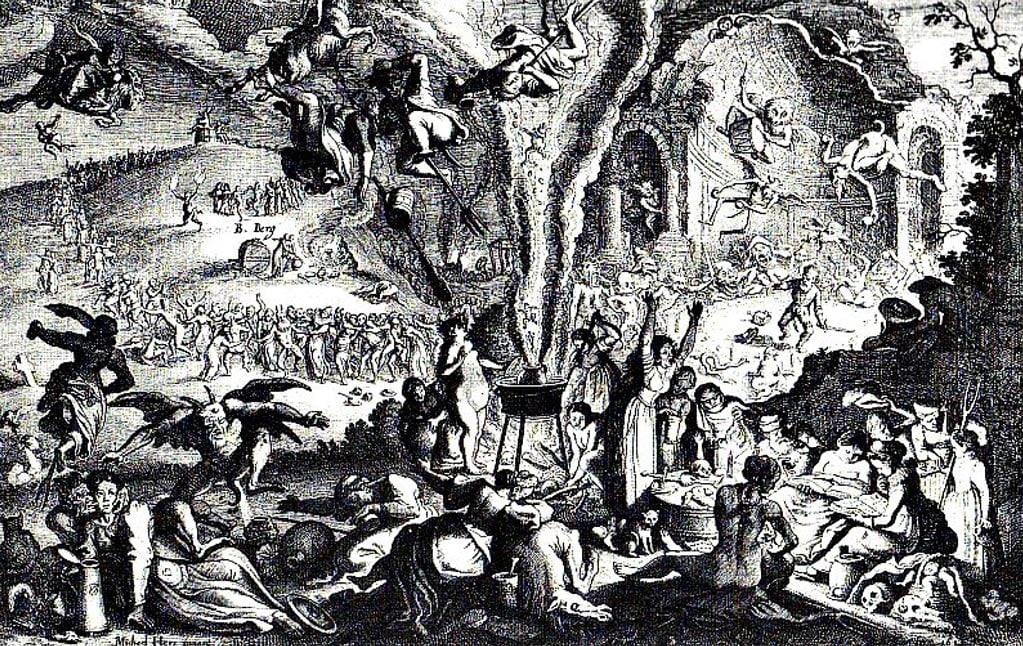The Zugarramurdi Witch Trials: Welcome to the Spanish Salem
On the border with France, embraced by a vast green pasture on which the cows calmly graze, lies the village of Zugarramurdi. Located in the Navarre region of Xareta this tiny village currently has just 250 inhabitants and, despite being known for its magnificent pine and chestnut trees as well as for hosting an impressive cave carved by water, Zugarramurdi owes its fame to sad and dark events mostly completed by its residents in the seventeenth century. Some of these events led the Court of the Inquisition to sentence fifty people to punishments for practicing witchcraft.
In 1608 the lords of Urtubi-Alzate and Sant Per requested urgent help from King Henry IV of France due to problems with witches in Labourd country. Then a woman from Zugarramurdi said that she dreamt that some villagers participated in a coven in the local cave. Her dream caused the abbot of Urdax to seek aid from the Court of the Holy Inquisition in Logroño, commissioning the inquisitor Juan Valle Alvarado to carry out investigations in the area.
The inquisitor, after listening to various comments and complaints, initially charged more than three hundred people. The most suspicious, about forty of the accused, were moved to Logroño prison and were later judged in the “Logroño Process” (a process that achieved international fame, crossing the Spanish and French borders. In June 1610 the court declared 29 of the accused guilty.
The Act of Faith
In the “Act of Faith” (auto da fe/auto de fe) held in Logroño on 7 and 8 November 1610, eighteen people were forgiven because they confessed their sins and appealed to the mercy of the court, six others resisted and were burned alive. Five statuettes were burned representing five more people, since they had already died in prison. About 30,000 people attended the Act of Faith on Sunday November 7, 1610, many of whom were from France.
- Salem Witch Trial hysteria and the courageous stance of Giles Corey
- Strange Cases of Mass Hysteria through History
- Have archaeologists found the last known witch grave in Scotland?
The 1610 Act of Faith in Logroño began with a procession composed of a thousand people including: family of the accused, commissioners, notaries of the Inquisition, and members of various religious orders. Further back in line there were twenty penitents carrying a candle in their hand, six of whom wore a rope around their neck, indicating that they should be flogged. After these, the forgiven walked with sanbenitos (a garment similar to a scapular) and large corozas (pointed hats.) Then five people appeared carrying the statues of the five convicts who had died in prison, accompanied by the corresponding coffins containing their remains. Four women and two men, also wearing the sanbenitos, but black ones that signified that they would be burned alive for their heresy followed. And completing the procession were four secretaries of the Inquisition and three inquisitors from the Logroño court riding horses and a donkey carrying the casket that contained the verdicts.

“Witch” wearing a Sanbenito and coroza, listening to the Inquisitor’s verdict at an “Act of Faith.” Caprice No. 23 by Francisco de Goya. (Wikimedia Commons )
Once they arrived and after everyone took their respective places, a Dominican inquisitor preached the sermon and then began reading the sentences by the inquisitorial secretaries. The reading lasted so long that the act of faith had to be extended until Monday November 8th. Due to the severity of the penalties, the witches of Zugarramurdi became known as the most brutal course of action that the Spanish Inquisition took against witchcraft.

Entrance of the Cueva de las Brujas de Zugarramurdi – Zugarramurdi Witches’ Cave (Flickr)
The Witches Cave and Museum
Over thousands of years, the Orabidea River bore a natural tunnel into the earth. The axis of the cave it created is oriented northeast to southwest, reaching a length of 120 meters (393.7 feet) with a width of 22-26 meters (72.2-85.3 feet) at its eastern end and about 12 meters (39.4 feet) at its western end. The cave has an average height of 10-12 meters (32.8-39.4 feet), with two high galleries.
Surrounded by a beautiful green landscape, this cave is called Sorginen Leizea, which is Euskera and means the cave of the witches. The main gallery is named the Infernuko Erreka - the gutter of hell. And if all this were not enough, the term coven (Spanish aquelarre), has its origin in Zugarramurdi, because next to the cave there is a meadow called Akelarre or Field of the Goat.

Skull of a male goat, associated with the devil in witches covens in Zugarramurdi. (Flickr)
Since 2007, the city has a museum dedicated to telling the stories of witchcraft and the Court of the Holy Inquisition. The Witch Museum, housed in the old hospital of the village organizes guided visits to the famous cave. The museum also plays a key role in Witches’ Day: an annual festival held since the museum's opening. Apart from these activities, the museum presents a magnificent portrait of Navarre life in the 17th century, including its myths and legends. The Witch Museum provides tourists and citizens of Zugarramurdi with a place to honor the men and women of the past.

One of the rooms at the Witch Museum in Zugarramurdi (Flickr)
Featured image: Old engraving depicting a coven. (Wikimedia Commons )
By: Mariló TA
Sources
http://www.abc.es/viajar/guia-repsol/20130905/abci-zugarramurdi-navarra-201309051839.html
http://www.vallenajerilla.com/berceo/gildelrio/zugarramurdi.htm
Caro Baroja, Julio (2003) [1961]. The witches and their world . Madrid: Alianza Editorial.
Caro Baroja, Julio (1985). Basque Witchcraft (4th edition). San Sebastián: Txertoa.
http://www.turismozugarramurdi.com/seccion/turismo_las_cuevas/
This article was first published in Spanish at https://www.ancient-origins.es/ and has been translated with permission.



















